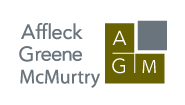Securities Litigation Update – June 2005
Contributing Authors: Kenneth A. Dekker , Paul Emerson, and Angela Yadav
The future of shareholder class actions in Ontario
The times are changing for shareholder class actions in Ontario. Last year, the Ontario Superior Court of Justice rendered Canada’s first-ever shareholder class action judgment arising from misrepresentations on an initial public offering (“IPO”) (Kerr v. Danier). Later this year, the Ontario government is expected to proclaim amendments to the Securities Act that will make it easier for investors on the secondary market (i.e. a stock exchange) to sue for corporate misrepresentations. While shareholder class actions have traditionally been largely a U.S. phenomenon, both of these developments promise to make shareholder class actions more prevalent in Ontario. At the same time, the U.S. Supreme Court’s recent decision in Dura v. Broudo will likely rein in shareholder class actions in the U.S.
Kerr v. Danier Leather Inc.[1]: In May 1998, much of Canada had an unseasonably warm spring. In May 2004, Canada’s pre-eminent leather goods manufacturer and retailer was hit with an estimated $15 million class action judgment. These two events bookend a six-year saga in which disgruntled purchasers of shares in Danier Leather’s 1998 IPO obtained Canada’s first-ever class action judgment in favour of investors arising from misrepresentations by a corporation prior to its IPO.
The action was brought under s.130 of the Ontario Securities Act, which allows initial purchasers of securities from an issuing company to recover their damages where the issuing company has made a misrepresentation in its prospectus. Initial purchasers of shares are deemed to have relied upon a company’s misrepresentation. This alters the normal legal requirement that a plaintiff show it actually relied on a misrepresentation. Section 130 does not apply to share purchasers on the secondary market – i.e. a stock exchange.
In this case, the misrepresentation involved Danier’s failure, after its May 6th prospectus, to release revised financial forecasts reflecting lower leather sales due to a warm spring. When this information was made public two weeks after the IPO, Danier’s share price dropped. In finding for the plaintiffs, Lederman J. found that Danier’s failure to release updated forecasts before the IPO was a material misrepresentation and it did not matter that its actual financial results later rebounded to approach those forecast in the May 6th prospectus. Lederman J. awarded share purchasers damages based on the difference between the purchase price for the shares and what they would have paid for their Danier shares on the IPO, had proper disclosure been made.
This decision makes it clear that a company must not only ensure the accuracy of forecasts in its prospectus; it must also update prospective purchasers with any information arising before the IPO that might affect its share value. This decision is under appeal with the hearing set for this summer.
Statutory civil liability for misrepresentations on the secondary market: Traditionally, class actions for corporate misrepresentations brought by purchasers of shares on a stock exchange have been curtailed by the requirement that each purchaser establish it actually relied upon the misrepresentation. This will soon change when recent Securities Act amendments come into force, making it easier for investors in the secondary market to sue for oral and written misrepresentations by public companies or influential persons with those companies.
Similar to s. 130, the new ss. 138.1 – 138.14 of the Securities Act[2] establish a presumption that investors relied upon a misrepresentation if they bought or sold their shares between its publication and when it was publicly corrected. Similar provisions allow actions to be brought for a public company’s failure to disclose a material change. In order to succeed, a shareholder must prove that the company or person intentionally made the misrepresentation or was grossly negligent or wilfully blind in doing so. It is notable that experts, such as auditors, can also be found liable to shareholders under this section – a marked change from the common law notion that a corporation’s auditors cannot be liable directly to its shareholders[3].
A public company sued under the new sections can avoid liability by proving that: (i) after a proper investigation, it had no reasonable grounds to believe its statement contained a misrepresentation; or (ii) the shareholder already knew of the inaccuracy of the representation when it traded its shares. Companies may also be protected when releasing forecasts to the public where those forecasts have a reasonable basis and are accompanied by appropriate cautionary language setting out the underlying assumptions and the factors that could cause actual results to differ from the forecast.
The new sections codify the calculation of damages due to a misrepresentation and cap the total liability of a company or individual for a particular misrepresentation. For a public company, the total liability is capped at the greater of $1 million or 5% of its market capitalization; while an individual’s liability is capped at $25,000.00 or 50% of their previous year’s compensation from the company. Experts’ liability is capped at the $1 million or the total compensation they received from the company during the prior year.
The legislation enacting the above provisions is expected to be in force, at the latest, by the end of this year. When that happens, it will almost certainly expand the number of securities-related class actions in Ontario and compel public companies to be vigilant in both ensuring the accuracy of information released to the public and quickly correcting any inaccurate information they do release.
Dura Pharmaceuticals, Inc. v. Broudo[4]: Last April, public companies with shares trading in the U.S. undoubtedly breathed a sigh of relief when the U.S. Supreme Court’s decision in Dura v. Broudo raised the bar for shareholders suing for damages from a public company’s misrepresentation. The Supreme Court overturned a decision below that found, similar to the Ontario court in Danier, that the plaintiffs need only establish an inflated share purchase price due to the misrepresentation in order to show that it caused them damages. This, the U.S. Supreme Court found, runs afoul of the common law requirement that a plaintiff prove that the misrepresentation was the proximate cause of its loss. Merely paying too much for shares, it found, does not cause loss unless the shareholder then sells those shares, suffers a loss on that sale and is able to establish that the loss was caused by the misrepresentation, rather than other market factors. Because the plaintiff failed to plead that anything more than an inflated purchase price was caused by the misrepresentation, its claim was struck. Dura is almost certain to have an impact on Canadian shareholder class actions, as Canadian courts tend to rely on U.S. cases for guidance in this area.
[1] [2004] O.J. No. 1916 (S.C.J.) For the full decision visit: http://www.canlii.org/on/cas/onsc/2004/2004onsc11174.html
[2] For full text visit: http://www.e-laws.gov.on.ca/DBLaws/Source/Statutes/English/2002/S02022_e.htm and also look at the amendments passed as Schedule 34 of the Budget Measures Act, Fall 2004, that are found at:
http://www.e-laws.gov.on.ca/DBLaws/Source/Statutes/English/2004/S04031_e.htm
[3] See the Supreme Court of Canada’s decision dismissing a shareholder’s action against corporate auditors in Hercules Managements Ltd. v. Ernst & Young, [1997] 2 S.C.R. 165.
[4] 125 S. Ct. 1627 (2005) – for the full decision, visit: www.supremecourtus.gov/opinions/04pdf/03-932.pdf
Investment firm allowed to refuse suspicious client trades
Last month the Ontario Court of Appeal overturned the trial decision of Himel J. in Venture Capital USA Inc. v. Yorkton Securities Inc.[5] that found Yorkton liable for suspending activity in a client’s accounts and preventing its trading of shares in two U.S. companies. Yorkton had suspended trading in the plaintiff’s accounts due to suspicions that proposed transactions might run afoul of U.S. securities laws. The Court of Appeal found that terms in Yorkton’s Client Agreements allowing it to refuse to process clients’ trading instructions “whenever deemed necessary for its protection or otherwise” were a defence to the plaintiff’s claim.
Himel J. had found for the plaintiffs on the basis of a term she implied in the Client Agreements requiring clear proof of illegality or reasonable notice to the client before a trade was refused or activity suspended. The Court of Appeal found no basis to imply such a term – finding there was no evidence to establish that such a term reflected the implied intention of the parties or that the implied term was necessary to give business efficacy to their agreement. The Court of Appeal further observed that the term implied by Himel J. did not accord with modern commercial reality, including the importance of a broker’s ability, acting in good faith, to refuse suspect transactions despite a lack of clear proof of illegality.
This decision is sure to be met with relief in the investment industry. Contractual terms allowing brokers to refuse trading instructions are standard in the industry and are key to brokers’ ability to fulfil their regulatory duty to avoid transactions they suspect might be illegal. The court has overturned a decision that had put brokers in the “Catch-22” position of having to either obtain a detailed opinion on the legality of a suspect transaction before processing it, or process the transaction and risk regulatory censure.
[5] [2005]O.J. No.1885 ( C.A. ) – for the full decision, visit: http://www.ontariocourts.on.ca/decisions/2005/may/C40750.htm
Court of Appeal restores OSC’s 15-year suspension of senior trader
In a decision last January in Donnini v. Ontario Securities Commission[6] , Ontario’s highest court restored the Ontario Securities Commission’s 15-year suspension of a former Yorkton Securities head of trading for unlawful insider trading. In 2002, the OSC found that Piergiorgio Donnini had engaged in massive trading in shares of a technology company while having confidential information on the company’s financing arrangements through Yorkton’s investment banking group. In addition to suspending Donnini’s registration for 15 years, the OSC required him to pay its costs of $186,052.30.
On the initial appeal, the Divisional Court reduced Donnini’s suspension from 15 to 4 years. In restoring the 15-year penalty, the Court of Appeal observed that the choice of penalty is within the OSC’s expertise and should be upheld unless unreasonable. This follows the direction set by the Supreme Court of Canada[7] recently in deferring to the expertise of the B.C. Securities Commission in deciding to impose a $100,000.00 fine and one-year suspension against several brokers for breaching prospectus requirements. In Donnini, the OSC had considered appropriate factors in choosing a penalty, including Donnini’s senior position and the impact insider trading has on the integrity of the market and investor confidence.
[6] [2005] O.J. No. 240 ( C.A. ).
[7] Cartaway Resources (Re) 2 004 SCC 26
New Criminal Code provisions target prohibited insider trading
On September 15, 2004, Bill C-13 came into force to amend the Criminal Code and strengthen the ability to prosecute and penalize illegal insider trading and capital markets fraud. The new offence of illegal insider trading, carrying a maximum penalty of 10 years in prison, attacks both the knowing use of insider information to trade a security and disclosure of insider information to others where there is a risk that those persons will use that information to buy or sell a security. While the offence of capital markets fraud – defined as fraudulently affecting the price of shares – has existed for years, the maximum penalty has increased from 10 to 14 years in prison.[8]
[8] Bill C-13 can be viewed online at www.parl.gc.ca
Could the Investment Dealer’s Association be liable to individual investment firm clients?
In 2003, the Ontario Court of Appeal decided in Morgis v. Thomson Kernaghan & Co.[9] that the Investment Dealers’ Association of Canada (“IDA”) cannot be held liable to individual investment dealer clients for failing to supervise one of its members. In refusing to allow disgruntled Thomson Kernaghan (“TK”) clients to sue the IDA for its failure to ensure TK complied with IDA regulations, the court found that the IDA does not owe a duty of care to individual clients. Instead, the IDA owes a duty to protect the public in general and has protections against liability similar to those enjoyed by statutory regulators such as law societies. Leave to appeal to the Supreme Court of Canada was denied.
However, the extent of the IDA’s protection against liability is called into question by recent decisions of both Canada’s Supreme Court and B.C.’s Court of Appeal. Last June, the Supreme Court found in Finney v. Barreau du Québec[10] that the body regulating Quebec lawyers was liable to the plaintiff for failing to properly handle complaints against her former lawyer. The court found that the Barreau’s statutory immunity for actions done in good faith did not protect it from liability for recklessness, extreme carelessness or intentional misconduct.
The B.C. Court of Appeal subsequently indicated in V.M. v. Stewart[11] that it could not see why Finney would not allow individuals to sue regulators in the rest of Canada. In V.M. v. Stewart, a patient’s action against the B.C. College of Physicians & Surgeons was allowed to proceed. There is no reason why the principles in Finney could not also allow claims against regulatory bodies such as the IDA or the OSC, where intentional misconduct , recklessness or extreme carelessness is proven. At a minimum, the IDA and OSC should feel a little less secure in their supposed immunity from liability to the investing public!
[9] (2003), 65 O.R. (3d) 321 ( C.A. ).
[10] 2004 SCC 36.
[11] [2004] B.C.J. No. 1852 (BCCA).
Investment firms liable for failing to warn clients about rogue broker
In February, the Ontario Court of Appeal upheld the trial judge’s decision in Blackburn v. Midland Walwyn Capital Inc.[12] that Midland Walwyn and Levesque Securities were liable for failing to warn two of their clients about a broker they knew was “breaking industry rules and was a risk to clients” and failing to adequately supervise the broker, despite his chequered past. The court found that broker had been a “big producer” and that this caused both firms to overlook both the broker’s shortcomings and their duty to protect his clients.
[12] [2005] O.J. No. 678 (CA).
Investment advisors rarely owe a fiduciary duty to their clients
In April 2004, Canada’s Supreme Court declined to hear a retired couple’s appeal of the Ontario Court of Appeal’s decision in Hunt v. TD Securities Inc.[13] that their broker did not owe them a fiduciary duty. In both Hunt and the Court of Appeal’s later decision in Hayward v. Hampton Securities Ltd.[14], the court made it clear that a fiduciary duty will not be owed unless the broker exercises discretion in trading the client’s account without prior instructions. However, a broker and his firm can still be liable for negligence or breach of contract even without owing a fiduciary duty.
[12] [2005] O.J. No. 678 (CA).
[13] (2003), 229 D.L.R. (4 th) 609 (Ont. C.A. )
[14] [2004] O.J. No. 2346 ( C.A. )










